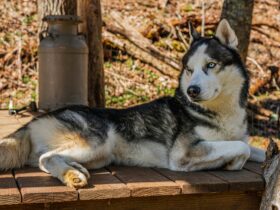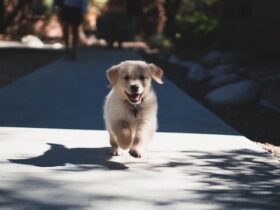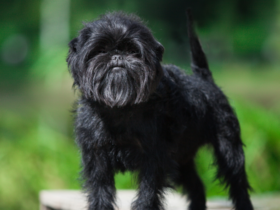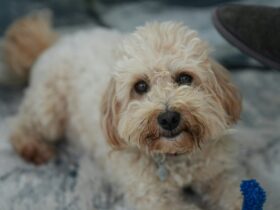The Irish Terrier, known for its distinctive red coat and lively personality, is one of the oldest and most revered terrier breeds. With a history that stretches back centuries, this breed has been a loyal companion to many and has earned a reputation for its intelligence, courage, and versatility. In this guide, we’ll explore the Irish Terrier’s history, physical characteristics, temperament, care needs, and more, providing a comprehensive overview of this charming breed.
History of the Irish Terrier
The Irish Terrier is one of Ireland’s oldest native breeds, with origins that can be traced back to the 17th century or earlier. Historically, these terriers were bred for their versatility in hunting and guarding, adept at catching vermin and protecting their owners’ homes. They were valued for their ability to work in various roles, from ratting to guarding livestock.
The breed’s distinctive appearance and temperamental qualities made it a favorite among Irish farmers and country folk. The Irish Terrier gained further recognition in the late 19th century, leading to its formal acknowledgment by breed clubs and organizations. Despite its long history and contributions to hunting and protection, the Irish Terrier is often overshadowed by other terrier breeds but remains a cherished and loyal companion.
Physical Characteristics
Size and Build
The Irish Terrier is a medium-sized terrier, standing about 18 to 20 inches at the shoulder. Males typically weigh between 25 to 27 pounds, while females are slightly lighter, weighing around 22 to 25 pounds. The breed has a sturdy, athletic build, characterized by a strong, well-balanced frame that reflects its working heritage.
Coat and Color
One of the most striking features of the Irish Terrier is its dense, wiry coat. The coat is typically a rich red or golden red, which provides a striking appearance and helps to distinguish the breed from others. The coat is double-layered, consisting of a harsh, wiry outer coat and a soft undercoat. Regular grooming is necessary to maintain the coat’s texture and appearance, as well as to manage shedding and prevent matting.
Face and Ears
The Irish Terrier has a distinctive face with a strong, rectangular muzzle and dark, expressive eyes that convey intelligence and alertness. The ears are medium-sized, V-shaped, and fold forward, giving the breed a characteristic expression of attentiveness and curiosity. The overall appearance is one of alertness and determination, reflecting the breed’s energetic and spirited nature.
Temperament and Behavior
Lively and Energetic
Irish Terriers are known for their lively and energetic demeanor. They possess a boundless enthusiasm for life and require regular physical activity to keep them happy and healthy. Daily walks, playtime, and opportunities to explore are essential for managing their high energy levels and preventing boredom-related behavior problems.
Intelligent and Trainable
This breed is highly intelligent and responsive to training. Irish Terriers are eager to please and quick to learn new commands and tricks. However, they can also be somewhat independent and stubborn, traits common in terriers. Consistent, positive reinforcement training methods work best to harness their intelligence and enthusiasm effectively.
Affectionate and Loyal
Irish Terriers are known for their deep affection and loyalty to their families. They form strong bonds with their owners and are protective of their loved ones. This loyalty makes them excellent family pets and companions, as they are always eager to be involved in family activities and provide emotional support.
Bold and Confident
The breed is also noted for its bold and confident nature. Irish Terriers are courageous and unafraid to take on challenges, which can sometimes translate into a strong-willed or headstrong attitude. This confidence makes them excellent watchdogs and alert companions, but it also means they require proper training and socialization to ensure they develop into well-behaved adults.
Care Requirements
Exercise Needs
Due to their high energy levels, Irish Terriers need regular exercise to stay healthy and content. Daily walks, interactive play sessions, and mental stimulation are crucial for their well-being. Engaging them in activities like agility training or obedience exercises can help keep their minds sharp and bodies fit.
Grooming
The Irish Terrier’s wiry coat requires regular grooming to maintain its texture and prevent matting. Brushing several times a week helps remove loose hair and keeps the coat in good condition. Regular trimming may be necessary to manage the coat’s length and ensure it remains clean and tidy. Additionally, routine care such as nail trimming, ear cleaning, and dental hygiene should be part of their regular care regimen.
Diet
A balanced diet is essential for the Irish Terrier’s overall health. High-quality dog food that meets their nutritional needs is important for maintaining their weight and energy levels. Be mindful of portion sizes to prevent obesity, and adjust their diet as needed based on their activity level and health status. Consulting with a veterinarian can help determine the best diet plan for your Irish Terrier.
Health Concerns
While generally healthy, the Irish Terrier can be prone to certain health issues, including:
- Hip Dysplasia: A condition where the hip joint doesn’t fit properly into the hip socket, leading to pain and mobility issues. Regular veterinary check-ups can help monitor and manage this condition.
- Ear Infections: The breed’s floppy ears can be prone to infections if not properly cleaned and cared for. Regular ear checks and cleaning can help prevent problems.
- Allergies: Some Irish Terriers may suffer from allergies, leading to skin irritations or other issues. Identifying and managing allergens is important for maintaining their health and comfort.
Living with an Irish Terrier
Irish Terriers are versatile and adaptable, making them suitable for a variety of living environments. They do well in homes with yards where they can run and play but can also adapt to apartment living if given sufficient exercise and mental stimulation.
Training and Socialization
Early socialization and training are crucial for a well-adjusted Irish Terrier. Introducing them to various people, pets, and environments helps them develop into confident and well-behaved adults. Consistent training using positive reinforcement techniques helps manage their strong-willed nature and harness their intelligence effectively.
Conclusion
The Irish Terrier is a breed with a rich history and a range of admirable qualities. From its striking appearance and energetic personality to its loyalty and intelligence, the Irish Terrier makes a wonderful companion for active families and individuals. Understanding their needs and characteristics ensures that you can provide the best care and enjoy a rewarding relationship with this charming and spirited breed.











Leave a Reply